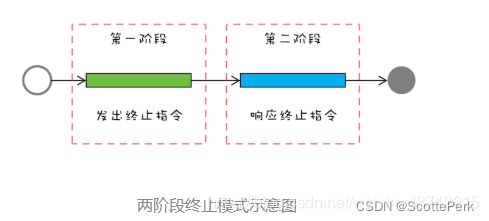Linux调试器gdb和cgdb的使用【Ubuntu】一、样例代码在介绍如何使用gdb和cgdb之前,先准备一个简单的C程序作为调试示例。假设我们有一个简单的程序example.c,它包含了一个求数组平均值的函数。#include#defineSIZE5doublecalculate_average(intarr[],intsize){intsum=0;for(inti=0;i
17.Spring Boot的Bean详解(新手版)
全栈凯哥
全栈项目springbootjava后端
文章目录1.什么是Bean?从零开始理解1.1Bean的定义1.2为什么需要Bean?1.3Beanvs普通对象的区别2.Spring容器:Bean的家2.1什么是Spring容器?2.2容器的工作流程3.Bean的声明方式详解3.1使用@Component及其专门化注解3.1.1@Component-通用组件3.1.2@Service-业务逻辑层3.1.3@Repository-数据访问层3.1
华为od 机试 2025 B卷 - 数值同化 (C++ & Python & JAVA & JS & GO)
无限码力
华为OD机试真题刷题笔记华为od华为OD2025B卷华为OD机试2025B卷华为OD机考2025B卷
数值同化华为OD机试真题目录:点击去查看华为OD2025B卷100分题型题目描述存在一个m*n的二维数组,其成员取值范围为0,1,2。其中值为1的元素具备同化特性,每经过1S,将上下左右值为0的元素同化为1,而值为2的元素,免疫同化。将数组所有成员随机初始化为0或2,再将矩阵的[0,0]元素修改为1,在经过足够长的时间后,求矩阵中有多少个元素是0或2(即0和2数量之和)。输入描述输入的前两个数字是
微信小程序ts+sassjlin-ui
1、根目录已有package.json所以直接安装即可npminstalllin-ui2、在project.config.json的setting中加入配置,重启开发工具!!!es6和enhance可在详情-本地设置-勾选将js编译成es5"es6":true,"enhance":true,"packNpmManually":true,"packNpmRelationList":[{"packag
【人工智能】大比拼:文心一言 VS ChatGPT —— 禅与计算机程序设计艺术亲自测评
AI天才研究院
ChatGPT人工智能文心一言chatgpt
收到了百度“文心一言”的内测邀请,现在给大家亲身体验测评一下!禅与计算机程序设计艺术先说结论:文心一言表现基本符合预期。与ChatGPT有一定差距,应该在几个月左右。但是禅与计算机程序设计艺术,挺期待ChatGLM-130B版本的效果的。因为,ChatGLM-6B在本地测评的效果,还是非常不错的!目录文心一言写一篇论文介绍一下你自己,从技术原理、应用场景、未来发展、当前不足等方面,不少于3000字
Django怎么获取get请求里面的参数
获取get请求里面参数的两种方法之三种写法一,当get网址是127.0.0.1:8000/info/?id=20&s_id=30这种类型的网址时我们在urls的路由的urlpatterns里面里面这样定义路由url(r'info/$',views.info),那么我们怎么把参数取出来呢因为我们调用的是views里面的info函数,所以我们可以这样获取到通过request.GET获取请求携带的参数d
项目篇:加入Python程序之如何在Python中使用C++?
guangcheng0312q
pythonc++windows开发语言
项目篇:加速Python程序之如何在Python中使用C++?通常像一些耗时的操作,我们期望在C++中去实现,然后使用Python去调用对应的接口,或者因为底层库的原因,需要支持对外的PythonAPI,那么我们通常需要支持在Python中访问C++,如何实现呢?方法比较多,本节以pybind11为例,引入一个完整的项目工程模版,如果你后续有这种需求,可以基于模版去修改。注:(懒人版)本节的所有代
2.4G收发SOC芯片 XL2417D,集成高性能2.4GHz射频收发器、32位MCU
XL2417D芯片是一款低功耗、高性能和高度集成的2.4GSoC芯片,带有蓝牙5.2BLE和2.4G收发器。它集成了高性能2.4GHz射频收发器、丰富的基带功能、32位MCU和各种外围IO。它支持128KB的flash和8KB的RAM,以实现可编程协议和配置文件,支持定制应用程序。XL2417D采用先进的55nmCMOS低泄漏工艺制造,降低BOM成本的同时简化了整个系统设计。丰富的外围设备包括10
2023 睿抗机器人开发者大赛CAIP-编程技能赛-本科组(省赛)
Harold0895
算法c语言c++
2023睿抗机器人开发者大赛CAIP-编程技能赛-本科组(省赛)RC-u1亚运奖牌榜题意给定两个国家/地区的金银铜牌的获得记录,输出他们的金银铜牌的具体记录,并输出哪个国家/地区排名高思路直接读入后比较即可代码#includeusingnamespacestd;inta[5],b[5];voidsolve(){intn;cin>>n;for(inti=1;i>wh>>op;if(wh==0)a[o
AI技术正在深度重构全球产业格局,其影响已超越工具属性,演变为推动行业变革的核心引擎。
一、AI如何重塑AI的工作与行业(AI助手领域)能力升级理解与生成:基于LLM(大语言模型),AI能处理开放式问题、撰写报告、翻译代码,替代部分人类知识工作。个性化交互:通过用户历史对话分析,提供定制化建议(如学习计划、投资策略)。多模态扩展:结合图像/语音识别(如GPT-4V),实现图文分析、医学影像解读等跨模态任务。行业变革客服行业:AI客服处理70%+常规咨询(如阿里小蜜),人力转向复杂问题
如何在 Linux 上使用 cURL 下载文件?| cURL 命令详解
vvw&
开源项目推荐Linux技术文章linux运维服务器ubuntu开源curlwget
简介如果你正在寻找快速答案,那么curl-O命令可让你使用curl命令行实用程序下载文件。当然,关于使用curl下载文件,除了-O参数之外,还有很多东西需要学习。我们将展示如何使用curl在Linux上下载文件,并提供多个curl下载命令的示例,你可以使用这些命令来满足不同的要求。如果你不熟悉curl,我们建议你通读本文。如果你熟悉curl但只需要快速回顾一下,请随意跳转到特定部分。什么是curl
【论文笔记ing】Pointerformer: Deep Reinforced Multi-Pointer Transformer for the Traveling Salesman Problem
Booksort
online笔记论文论文阅读transformer深度学习
论文中使用一个PointerFormer模型编码器部分:可逆残差模型堆叠解码器部分:指针网络自回归对于一次任务而言,推理阶段:编码器部分:一次解码器部分:循环N次,直至任务结束在训练阶段,使用强化学习,对于一个N个节点的TSP实例,算法中会以不同的起点,跑N次,得到N个轨迹,以满足TSP的对称特性,表示这都是属于一个TSP问题的(真实)解然后会计算这样表示归一化奖励,得到一个advantage,然
想转行网络安全,可以先看看过来人的建议
孤独的汤姆
web安全安全
在当前就业形势下,不少朋友面临转行的困境。网络安全作为一个热门领域,自然也吸引了许多人的目光。本文将就转行网络安全这一话题,提供一些切实可行的建议。网络安全行业概况网络安全涵盖了从基础的脚本编写到高级的漏洞研究等多个层面。该领域包括但不限于:渗透测试、漏洞评估、恶意软件分析、入侵检测、信息安全管理等。这些内容的复杂性不一,从基础的安全监控到复杂的安全架构设计都涉及其中。这就意味着,尽管有些领域可能
【线上故障排查】缓存穿透攻击的识别与布隆过滤器(面试题 + 3 步追问应对 + 案例分析)
程序员岳彬
从项目到面试:Java高频面试题场景化通关指南缓存java后端springbootlinuxredis
一、高频面试题问题1:什么是缓存穿透?它对系统的核心危害是什么?参考答案:缓存穿透指的是用户请求的数据在缓存和数据库中都不存在,导致请求直接绕过缓存打到数据库。核心危害是大量无效请求会耗尽数据库资源,比如CPU、内存或连接数,严重时可能引发数据库宕机,进而导致整个系统崩溃,影响服务可用性。第一步追问:缓存穿透和缓存雪崩有什么本质区别?参考答案:两者本质不同。缓存穿透是请求不存在的数据,攻击或逻辑漏
Unity Netcode自定义数据传输——结构体及其序列化
未来的中科院院士
unity游戏引擎
在UnityNetcode中,要实现自定义数据的网络传输,确实需要两个关键部分:✅两个必需组件:数据结构定义publicstructPlayerState:INetworkSerializable{publicintid;//字段1:玩家IDpublicboolisReady;//字段2:准备状态//...其他字段}作用:定义要传输的数据内容本质:声明"要传输什么"序列化方法实现publicvoi
Linux 中的 .bashrc 是什么?配置详解
vvw&
技术文章Linuxlinuxchrome运维服务器ubuntu后端centos
如果你使用过Linux终端,那么你很可能接触过.bashrc文件。这个功能强大的脚本是个性化命令行环境并使其更高效运行的关键。在本文中,我们将向你介绍这个文件是什么,在哪里可以找到它,以及如何安全地编辑它。你还将学到一些实用技能,如创建省时的命令别名、编写强大的shell函数,以及自定义终端提示的外观。最后,我们还将介绍基本的最佳实践和常见错误,帮助你建立更高效、更强大的命令行工作流程。准备强烈简
使用工厂模式和策略模式实现布隆过滤器
小菜0-o
策略模式
使用工厂模式和策略模式实现布隆过滤器的大概流程如下:定义布隆过滤器接口:首先定义一个布隆过滤器接口,包括添加元素和判断元素是否存在两个基本操作。实现具体的布隆过滤器类:创建一个具体的布隆过滤器类,实现布隆过滤器接口中的方法。在这个类中,需要定义布隆过滗器的数据结构(比如位数组)、大小等属性。定义哈希策略接口:定义一个哈希策略接口,包含计算哈希值的方法。实现具体的哈希策略类:创建多个具体的哈希策略类
深度解码:企业级 AI 选型中 Gemini 与 DeepSeek 的架构对决
charles666666
人工智能架构语言模型深度学习产品经理机器学习
开篇:技术选型会议中的认知困局当技术团队尝试评估基于MoE(专家混合)架构的Gemini1.5Pro和DeepSeek-V3时,决策者往往陷入认知混乱。尽管两者同属MoE架构,实际测试表现却大相径庭。这种混乱源于对参数规模的盲目崇拜。Gemini1.5Pro拥有1.5万亿参数,而DeepSeek-V3参数规模仅为前者的一半。但在实际企业场景测试中,DeepSeek在中文语义理解任务中的准确率却高出
从 callTool 到思考型调用:月影 Resolver 颠覆传统 MCP 的三板斧
weixin_55007223
月影陪伴智能体AI编程语言模型人工智能
3ms与2s——这是Resolver用两条完全不同的路径给出的答案。当大多数MCP集成还停留在callTool(…)的机械时代,月影把“工具调用”推进了一格:让语义去找工具,让工具自己组队。这不是一次简单的工程优化,而是我们对“人机协作边界”的一次重新提问。我们相信——工具不只是工具,而是智能的触角;而Resolver,是月影整个意识系统中最冷静、最精准的那个判断节点。结果也在验证这一点:95%日
来,C语言刷题(中)(保姆式详解)
白子寰
C语言题集c语言算法
目录关于VS2022调试技巧步骤一步骤二步骤三关于Debug和Release版本区别编程题1.计算求和2.水仙花数3.打印菱形4.喝汽水问题递归题组(1)关于递归的描述(2)打印一个整数的每一位(3)求阶层①递归方式②非递归方式(4)计算一个数的每位之和(5)n的k次方操作符讲解(1)进制位的转化(2)原码,反码,补码(3)按位异或^(4)按位或与&编程题(1)交换两个变量(2)统计二进制中1的个
微信小程序--顶部轮播图
wendyNo
小程序小程序
效果图市面是手机尺寸有很多,那如何让我们的轮播图根据手机来进行自适应呢?常见的手机尺寸:wxmlWXSS.banneritem{width:100%;}.banneritemimage{width:100%;}JSconstapp=getApp();varpage=1;Page({data:{bannerUrls:[//轮播图的图片{url:'/images/banner1.jpeg',linkU
oracle pg 文件级迁移,从Oracle迁移到AntDB(二)-- ora2pg-对象和数据的导出导入
使用Ora2pg和psqlcopy方式进行数据迁移author:yafeishitags:AntDB,ora2pg,oracleAntDB:github_url,基于postgresql的高性能分布式数据库使用Ora2pg和psqlcopy方式进行数据迁移准备工作使用本文档的前提本文档指导如何使用ora2pg进行oracle到ADB的数据迁移,但是在参照本文档操作之前,有以下条件必须满足:-ADB
干货分享|手把手教你,用 “扣子” 开发自己的 AI 智能体
全栈开发圈
人工智能
在当今时代,AI浪潮正以前所未有的态势席卷全球,“颠覆”“变革”等词汇频繁出现在我们的视野中,似乎已经成了老生常谈。当大多数人还沉浸在与大模型愉快聊天的乐趣时,那些走在时代前沿的高手们,早已悄然利用AI智能体(Agent)开启了自动工作、创造价值的新篇章。你是否曾无数次幻想,能拥有一个专属的AI助手?它可以在你毫无头绪时,自动生成精妙绝伦的文案;在时间紧迫的情况下,迅速制作出精美大气的PPT;还能
JavaSE的集合(Collection)
pkhlll
java
集合主要分为两大系列:Collection和MapCollection:Collection的子接口有Set、List、QueueCollection是层次结构的根接口,是所有单列集合的父接口,在Collection中定义了单列集合(List和Set)的通用的一些方法:1、添加元素(1)add(Eobj):添加元素对象到当前集合中(2)addAll(Collectionother):添加other
FreeRTOS 可重入
✅一、FreeRTOS是“可重入”的吗?FreeRTOS本身是设计为可重入的RTOS内核,但它的可重入性依赖于你使用的API和上下文环境(任务、ISR、中断嵌套等)。我们分情况来看:二、不同上下文下的可重入性分析1.FreeRTOS内核API(任务管理、调度器等)内核是多任务安全的(即线程安全/可重入)。大多数API内部使用了临界区保护(关中断/禁止调度),确保操作的原子性。✅可重入2.FreeR
Linux中安装Tomcat
十一的学习笔记
运维中服务安装管理linuxtomcat运维
文章目录一、Tomcat介绍1.1、Tomcat是什么1.2、Tomcat的工作原理1.3、Tomcat适用的场景1.4、Tomcat与Nginx、Apache比较1.4.1、优势1.4.2、劣势1.4.3、定位功能1.5、Tomcat的主要组件1.6、Tomcat的主要配置文件二、Tomcat安装2.1、查看可用的JDK2.2、安装OpenJDK112.3、配置环境变量2.4、验证安装2.5、查
对股票分析时要注意哪些主要因素?
会飞的奇葩猪
股票 分析 云掌股吧
众所周知,对散户投资者来说,股票技术分析是应战股市的核心武器,想学好股票的技术分析一定要知道哪些是重点学习的,其实非常简单,我们只要记住三个要素:成交量、价格趋势、振荡指标。
一、成交量
大盘的成交量状态。成交量大说明市场的获利机会较多,成交量小说明市场的获利机会较少。当沪市的成交量超过150亿时是强市市场状态,运用技术找综合买点较准;
【Scala十八】视图界定与上下文界定
bit1129
scala
Context Bound,上下文界定,是Scala为隐式参数引入的一种语法糖,使得隐式转换的编码更加简洁。
隐式参数
首先引入一个泛型函数max,用于取a和b的最大值
def max[T](a: T, b: T) = {
if (a > b) a else b
}
因为T是未知类型,只有运行时才会代入真正的类型,因此调用a >
C语言的分支——Object-C程序设计阅读有感
darkblue086
applec框架cocoa
自从1972年贝尔实验室Dennis Ritchie开发了C语言,C语言已经有了很多版本和实现,从Borland到microsoft还是GNU、Apple都提供了不同时代的多种选择,我们知道C语言是基于Thompson开发的B语言的,Object-C是以SmallTalk-80为基础的。和C++不同的是,Object C并不是C的超集,因为有很多特性与C是不同的。
Object-C程序设计这本书
去除浏览器对表单值的记忆
周凡杨
html记忆autocompleteform浏览
&n
java的树形通讯录
g21121
java
最近用到企业通讯录,虽然以前也开发过,但是用的是jsf,拼成的树形,及其笨重和难维护。后来就想到直接生成json格式字符串,页面上也好展现。
// 首先取出每个部门的联系人
for (int i = 0; i < depList.size(); i++) {
List<Contacts> list = getContactList(depList.get(i
Nginx安装部署
510888780
nginxlinux
Nginx ("engine x") 是一个高性能的 HTTP 和 反向代理 服务器,也是一个 IMAP/POP3/SMTP 代理服务器。 Nginx 是由 Igor Sysoev 为俄罗斯访问量第二的 Rambler.ru 站点开发的,第一个公开版本0.1.0发布于2004年10月4日。其将源代码以类BSD许可证的形式发布,因它的稳定性、丰富的功能集、示例配置文件和低系统资源
java servelet异步处理请求
墙头上一根草
java异步返回servlet
servlet3.0以后支持异步处理请求,具体是使用AsyncContext ,包装httpservletRequest以及httpservletResponse具有异步的功能,
final AsyncContext ac = request.startAsync(request, response);
ac.s
我的spring学习笔记8-Spring中Bean的实例化
aijuans
Spring 3
在Spring中要实例化一个Bean有几种方法:
1、最常用的(普通方法)
<bean id="myBean" class="www.6e6.org.MyBean" />
使用这样方法,按Spring就会使用Bean的默认构造方法,也就是把没有参数的构造方法来建立Bean实例。
(有构造方法的下个文细说)
2、还
为Mysql创建最优的索引
annan211
mysql索引
索引对于良好的性能非常关键,尤其是当数据规模越来越大的时候,索引的对性能的影响越发重要。
索引经常会被误解甚至忽略,而且经常被糟糕的设计。
索引优化应该是对查询性能优化最有效的手段了,索引能够轻易将查询性能提高几个数量级,最优的索引会比
较好的索引性能要好2个数量级。
1 索引的类型
(1) B-Tree
不出意外,这里提到的索引都是指 B-
日期函数
百合不是茶
oraclesql日期函数查询
ORACLE日期时间函数大全
TO_DATE格式(以时间:2007-11-02 13:45:25为例)
Year:
yy two digits 两位年 显示值:07
yyy three digits 三位年 显示值:007
线程优先级
bijian1013
javathread多线程java多线程
多线程运行时需要定义线程运行的先后顺序。
线程优先级是用数字表示,数字越大线程优先级越高,取值在1到10,默认优先级为5。
实例:
package com.bijian.study;
/**
* 因为在代码段当中把线程B的优先级设置高于线程A,所以运行结果先执行线程B的run()方法后再执行线程A的run()方法
* 但在实际中,JAVA的优先级不准,强烈不建议用此方法来控制执
适配器模式和代理模式的区别
bijian1013
java设计模式
一.简介 适配器模式:适配器模式(英语:adapter pattern)有时候也称包装样式或者包装。将一个类的接口转接成用户所期待的。一个适配使得因接口不兼容而不能在一起工作的类工作在一起,做法是将类别自己的接口包裹在一个已存在的类中。 &nbs
【持久化框架MyBatis3三】MyBatis3 SQL映射配置文件
bit1129
Mybatis3
SQL映射配置文件一方面类似于Hibernate的映射配置文件,通过定义实体与关系表的列之间的对应关系。另一方面使用<select>,<insert>,<delete>,<update>元素定义增删改查的SQL语句,
这些元素包含三方面内容
1. 要执行的SQL语句
2. SQL语句的入参,比如查询条件
3. SQL语句的返回结果
oracle大数据表复制备份个人经验
bitcarter
oracle大表备份大表数据复制
前提:
数据库仓库A(就拿oracle11g为例)中有两个用户user1和user2,现在有user1中有表ldm_table1,且表ldm_table1有数据5千万以上,ldm_table1中的数据是从其他库B(数据源)中抽取过来的,前期业务理解不够或者需求有变,数据有变动需要重新从B中抽取数据到A库表ldm_table1中。
HTTP加速器varnish安装小记
ronin47
http varnish 加速
上午共享的那个varnish安装手册,个人看了下,有点不知所云,好吧~看来还是先安装玩玩!
苦逼公司服务器没法连外网,不能用什么wget或yum命令直接下载安装,每每看到别人博客贴出的在线安装代码时,总有一股羡慕嫉妒“恨”冒了出来。。。好吧,既然没法上外网,那只能麻烦点通过下载源码来编译安装了!
Varnish 3.0.4下载地址: http://repo.varnish-cache.org/
java-73-输入一个字符串,输出该字符串中对称的子字符串的最大长度
bylijinnan
java
public class LongestSymmtricalLength {
/*
* Q75题目:输入一个字符串,输出该字符串中对称的子字符串的最大长度。
* 比如输入字符串“google”,由于该字符串里最长的对称子字符串是“goog”,因此输出4。
*/
public static void main(String[] args) {
Str
学习编程的一点感想
Cb123456
编程感想Gis
写点感想,总结一些,也顺便激励一些自己.现在就是复习阶段,也做做项目.
本专业是GIS专业,当初觉得本专业太水,靠这个会活不下去的,所以就报了培训班。学习的时候,进入状态很慢,而且当初进去的时候,已经上到Java高级阶段了,所以.....,呵呵,之后有点感觉了,不过,还是不好好写代码,还眼高手低的,有
[能源与安全]美国与中国
comsci
能源
现在有一个局面:地球上的石油只剩下N桶,这些油只够让中国和美国这两个国家中的一个顺利过渡到宇宙时代,但是如果这两个国家为争夺这些石油而发生战争,其结果是两个国家都无法平稳过渡到宇宙时代。。。。而且在战争中,剩下的石油也会被快速消耗在战争中,结果是两败俱伤。。。
在这个大
SEMI-JOIN执行计划突然变成HASH JOIN了 的原因分析
cwqcwqmax9
oracle
甲说:
A B两个表总数据量都很大,在百万以上。
idx1 idx2字段表示是索引字段
A B 两表上都有
col1字段表示普通字段
select xxx from A
where A.idx1 between mmm and nnn
and exists (select 1 from B where B.idx2 =
SpringMVC-ajax返回值乱码解决方案
dashuaifu
AjaxspringMVCresponse中文乱码
SpringMVC-ajax返回值乱码解决方案
一:(自己总结,测试过可行)
ajax返回如果含有中文汉字,则使用:(如下例:)
@RequestMapping(value="/xxx.do") public @ResponseBody void getPunishReasonB
Linux系统中查看日志的常用命令
dcj3sjt126com
OS
因为在日常的工作中,出问题的时候查看日志是每个管理员的习惯,作为初学者,为了以后的需要,我今天将下面这些查看命令共享给各位
cat
tail -f
日 志 文 件 说 明
/var/log/message 系统启动后的信息和错误日志,是Red Hat Linux中最常用的日志之一
/var/log/secure 与安全相关的日志信息
/var/log/maillog 与邮件相关的日志信
[应用结构]应用
dcj3sjt126com
PHPyii2
应用主体
应用主体是管理 Yii 应用系统整体结构和生命周期的对象。 每个Yii应用系统只能包含一个应用主体,应用主体在 入口脚本中创建并能通过表达式 \Yii::$app 全局范围内访问。
补充: 当我们说"一个应用",它可能是一个应用主体对象,也可能是一个应用系统,是根据上下文来决定[译:中文为避免歧义,Application翻译为应
assertThat用法
eksliang
JUnitassertThat
junit4.0 assertThat用法
一般匹配符1、assertThat( testedNumber, allOf( greaterThan(8), lessThan(16) ) );
注释: allOf匹配符表明如果接下来的所有条件必须都成立测试才通过,相当于“与”(&&)
2、assertThat( testedNumber, anyOf( g
android点滴2
gundumw100
应用服务器android网络应用OSHTC
如何让Drawable绕着中心旋转?
Animation a = new RotateAnimation(0.0f, 360.0f,
Animation.RELATIVE_TO_SELF, 0.5f, Animation.RELATIVE_TO_SELF,0.5f);
a.setRepeatCount(-1);
a.setDuration(1000);
如何控制Andro
超简洁的CSS下拉菜单
ini
htmlWeb工作html5css
效果体验:http://hovertree.com/texiao/css/3.htmHTML文件:
<!DOCTYPE html>
<html xmlns="http://www.w3.org/1999/xhtml">
<head>
<title>简洁的HTML+CSS下拉菜单-HoverTree</title>
kafka consumer防止数据丢失
kane_xie
kafkaoffset commit
kafka最初是被LinkedIn设计用来处理log的分布式消息系统,因此它的着眼点不在数据的安全性(log偶尔丢几条无所谓),换句话说kafka并不能完全保证数据不丢失。
尽管kafka官网声称能够保证at-least-once,但如果consumer进程数小于partition_num,这个结论不一定成立。
考虑这样一个case,partiton_num=2
@Repository、@Service、@Controller 和 @Component
mhtbbx
DAOspringbeanprototype
@Repository、@Service、@Controller 和 @Component 将类标识为Bean
Spring 自 2.0 版本开始,陆续引入了一些注解用于简化 Spring 的开发。@Repository注解便属于最先引入的一批,它用于将数据访问层 (DAO 层 ) 的类标识为 Spring Bean。具体只需将该注解标注在 DAO类上即可。同时,为了让 Spring 能够扫描类
java 多线程高并发读写控制 误区
qifeifei
java thread
先看一下下面的错误代码,对写加了synchronized控制,保证了写的安全,但是问题在哪里呢?
public class testTh7 {
private String data;
public String read(){
System.out.println(Thread.currentThread().getName() + "read data "
mongodb replica set(副本集)设置步骤
tcrct
javamongodb
网上已经有一大堆的设置步骤的了,根据我遇到的问题,整理一下,如下:
首先先去下载一个mongodb最新版,目前最新版应该是2.6
cd /usr/local/bin
wget http://fastdl.mongodb.org/linux/mongodb-linux-x86_64-2.6.0.tgz
tar -zxvf mongodb-linux-x86_64-2.6.0.t
rust学习笔记
wudixiaotie
学习笔记
1.rust里绑定变量是let,默认绑定了的变量是不可更改的,所以如果想让变量可变就要加上mut。
let x = 1; let mut y = 2;
2.match 相当于erlang中的case,但是case的每一项后都是分号,但是rust的match却是逗号。
3.match 的每一项最后都要加逗号,但是最后一项不加也不会报错,所有结尾加逗号的用法都是类似。
4.每个语句结尾都要加分
